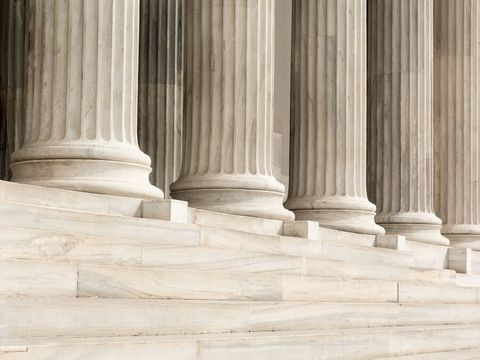The SBA’s PPP Safe Harbor Deadline—of Tomorrow—Remains Firm With Added Protection on Smaller Loan Amounts
Client Alert | 2 min read | 05.13.20
The Small Business Administration’s (SBA) shifting guidance on the economic necessity certification required by the Paycheck Protection Program (PPP) application has launched borrowers on a roller coaster ride the past few weeks. The SBA originally provided a safe harbor deadline of May 7, 2020 for PPP applicants who lacked an adequate basis for the certification to return their loans. Two days before the deadline, the SBA extended this deadline to May 14, 2020, while promising additional guidance on how the SBA “will review the certification.”
On May 13, 2020, the SBA updated its FAQ document, adding FAQ 46 stating that it addresses how the SBA will review borrowers’ economic necessity certifications.
There is good news for any borrower that—together with its affiliates—received PPP loans with “an original principal amount of less than $2 million.” Such entities will be deemed to have made the economic necessity certification in good faith, and the SBA has indicated it will not focus its finite audit resources on these borrowers’ economic necessity certifications.
For borrowers with loans greater than $2 million, if the SBA determines in the course of its review that a borrower lacked an adequate basis for its economic necessity certification, FAQ 46 provides that the SBA will seek repayment of the outstanding PPP loan balance and will inform the lender that the borrower is not eligible for loan forgiveness. But, so long as the borrower repays the loan after receiving notification from the SBA, FAQ 46 states that the SBA will not pursue administrative enforcement or referrals to other agencies based on its determination with respect to the certification concerning necessity of the loan request. Apart from this, the SBA is apparently not providing any additional guidance on how it will evaluate whether a PPP applicant made the economic necessity certification in good faith or what factors or standards borrowers should consider in determining whether they can make the certification in good faith and/or utilize the safe harbor period that closes tomorrow. This means that borrowers should still assess their individual circumstances against the certification language as well as the factors highlighted in the SBA’s FAQ 31, which discussed a borrower’s current business activity and ability to access other sources of liquidity sufficient to support ongoing operations in a manner that is not significantly detrimental to the business. Further, FAQ 46 raises new questions such as the ability or process to dispute SBA’s determination on the adequacy of the certification as well as terms and timing of repayment.
The safe harbor deadline to return PPP loans remains set at May 14, 2020.
Contacts
Insights
Client Alert | 5 min read | 12.12.25
Eleventh Circuit Hears Argument on False Claims Act Qui Tam Constitutionality
On the morning of December 12, 2025, the Eleventh Circuit heard argument in United States ex rel. Zafirov v. Florida Medical Associates, LLC, et al., No. 24-13581 (11th Cir. 2025). This case concerns the constitutionality of the False Claims Act (FCA) qui tam provisions and a groundbreaking September 2024 opinion in which the United States District Court for the Middle District of Florida held that the FCA’s qui tam provisions were unconstitutional under Article II. See United States ex rel. Zafirov v. Fla. Med. Assocs., LLC, 751 F. Supp. 3d 1293 (M.D. Fla. 2024). That decision, penned by District Judge Kathryn Kimball Mizelle, was the first success story for a legal theory that has been gaining steam ever since Justices Thomas, Barrett, and Kavanaugh indicated they would be willing to consider arguments about the constitutionality of the qui tam provisions in U.S. ex rel. Polansky v. Exec. Health Res., 599 U.S. 419 (2023). In her opinion, Judge Mizelle held (1) qui tam relators are officers of the U.S. who must be appointed under the Appointments Clause; and (2) historical practice treating qui tam and similar relators as less than “officers” for constitutional purposes was not enough to save the qui tam provisions from the fundamental Article II infirmity the court identified. That ruling was appealed and, after full briefing, including by the government and a bevy of amici, the litigants stepped up to the plate this morning for oral argument.
Client Alert | 8 min read | 12.11.25
Director Squires Revamps the Workings of the U.S. Patent Office
Client Alert | 8 min read | 12.10.25
Creativity You Can Use: CJEU Clarifies Copyright for Applied Art
Client Alert | 4 min read | 12.10.25
Federal Court Strikes Down Interior Order Suspending Wind Energy Development





